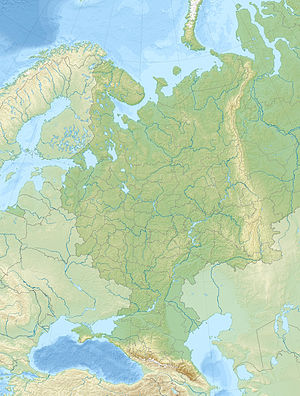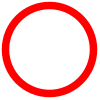Middle-Urals Ring Structure
Coordinates: 56°N 56°E / 56°N 56°E
The Middle-Urals Ring Structure (MURS) is a circular structure located in the central Ural Mountains.[1][2] The structure has a diameter in the range of 400 to 550 km and formed in the Precambrian prior to the Uralian orogeny.[1][2]
The structure is reflected in the bend of Ural Mountains at 56° N and in a concentric-radial drainage pattern seen in the Belaya and Kama rivers and their tributaries.[2]
The Middle-Urals Ring Structure has been identified as a possible impact structure[1][2] and it has also been posited that the pre-existing ring structure disturbed the development of the Uralian orogeny causing the east-convex bend of the mountains.[2]
The eastern rim of the structure contains the main Ural ore fields of iron, copper, chromite, nickel, titanium, gold and platinum.[2] On the western half of the structure there are important oil fields.[2] In addition the Middle-Urals Ring Structure hosts world-class deposits of gemstones.[3]
References[edit]
- ↑ 1.0 1.1 1.2 G. Burba (1991). Middle-Urals Ring structure, USSR: Definition, description, possible planetary analogues, Lunar and Planetary Science conference XXII.
- ↑ 2.0 2.1 2.2 2.3 2.4 2.5 2.6 G. Burba (2003). The geologic evolution of the Ural Mountains: A supposed exposure to a giant impact. Microsymposium 38, MS011, 2003
- ↑ Saul, John M. (2017). "Transparent gemstones and the most recent supercontinent cycle". International Geology Review. doi:10.1080/00206814.2017.1354730.
This article "Middle-Urals Ring Structure" is from Wikipedia. The list of its authors can be seen in its historical and/or the page Edithistory:Middle-Urals Ring Structure. Articles copied from Draft Namespace on Wikipedia could be seen on the Draft Namespace of Wikipedia and not main one.




